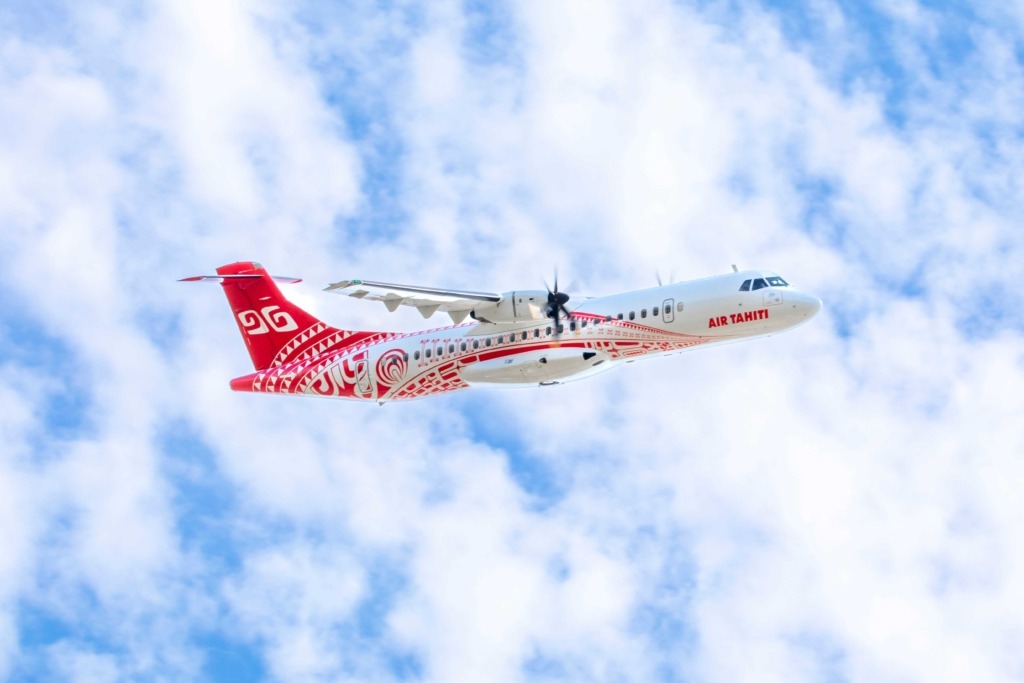Privately-owned Air Tahiti is based at Faaʻa International Airport and provides air services to the various archipelagos of Tahiti and the islands. As with other global tourist hot spots, French Polynesia was severely impacted by the Covid-induced shut down cutting off the islands’ lucrative tourism.
“With the reopening of borders post-pandemic, we have expanded through lease agreements and charters to meet the strong rebound in activity,” said Cécile Savalli, Air Tahiti’s deputy chief executive. Additionally, the airline has now resumed its full network of 48 destinations, including its sole international service to the Cook Islands in June last year.
Island-hopping options
According to data from aviation intelligence platform IBA Insight, Air Tahiti has a near monopoly on the key island-hopping routes surrounding Tahiti Island in French Polynesia. The data shows 17% of ASK capacity serving Faa’a International Airport to Bora Bora and a further 30% of ASKs split between Faaʻa to Raiatea Island, Hiva Oa, and Nuku Hiva.
The remaining capacity is split between numerous other island destinations and smaller island connections. On Air Tahiti’s top 30 routes by flight volume, Air Moana is the only competition. IBA’s insights shows that Air Moana emerged in early 2022 and was established by the former head of Air Tahiti. It gained 7% market share from Air Tahiti in 2023, and 5% of 2024 route traffic to date.
Total ASKs on Air Tahiti’s network grew 61% in 2023 from 2019 capacity and it appears the airline is continuing this post-Covid growth performance into 2024, IBA disclosed.
Despite a return to profitability and a rebound in tourism and inter-island travel, Air Tahiti’s profits have taken a hit, Savalli admitted. “The new airline [Air Moana] began competing on domestic routes with very low prices, thus impacting the sector’s profitability,” she said.
During the pandemic some French Polynesian carriers turned to the French government for aid to keep them afloat, like Air Tahiti Nui. Reportedly, the long-haul operator received $341 million to help finance its post-pandemic recovery plan. Savalli confirmed that Air Tahiti too benefited from a guaranteed loan from France, but the exact figure is undisclosed and that a portion of that loan had been paid back.
Adding new capacity
As of August 2024, the Air Tahiti fleet consists of nine ATR72-600s and two ATR42-600s. As an IBA analyst noted, growth is steady, serving local island traffic, and despite the low fleet growth, Air Tahiti has up-gauged the fleet from the -500s in 2005 to the newer -600s in 2024. Air Tahiti owns nine of its aircraft directly, aside from one ATR72-600 on an operating lease from Aviation PLC and another financed by Credit Agricole CIB (essentially owned by Air Tahiti).
At the Farnborough International Airshow in July, the Tahitian airline and ATR signed a purchase contract for four new ATR-72-600s in addition to another unit ordered at the Singapore air show in February, bringing the total to five. “The first delivery is in December 2024, and subsequently, we will acquire one to two new ATRs per year over the coming years,” said Savalli.
Leveraging ATR’s expertise
In order to serve the different Islands efficiently, Air Tahiti is relaying on the performance of the ATRs. In addition to a fleet renewal, the airline recently signed an eight-year Global Maintenance Agreement (GMA) extension – this is ATR’s pay-by-the-hour maintenance package. The GMA, according to ATR, will leverage the OEM’s expertise as both an aircraft manufacturer and service provider to further optimise operations, enhance performance and rationalise costs. Under this comprehensive agreement, ATR will provide repair, overhaul and pooling services of Line Replaceable Units (LRUs) ensuring the airline maintains a high standard of reliability and efficiency.
Air Tahiti is also considering the Short Take Off and Landing (STOL) variant in development by ATR.
The airline is also analysing the potential for further international reach. Currently, the only route of the type, to the Cook Islands, is operated through a code-share with Air Rarotonga. “We are evaluating other international routes in the South Pacific, which will require us to operate a new type of aircraft,” Savalli mentioned. This could potentially include a jet aircraft, but details remain unconfirmed.
Responsible flying
In French Polynesia, where air services are particularly vital, the ATRs emit 45% less CO2 compared to similar-size regional jets, the airline stated.
Vairani Tetaria, marketing and commercial director at Air Tahiti, said the airline was in the process of strengthening its societal commitment and that a carbon footprint assessment had already begun.
“This is a crucial step considering the tourism development of our country and the concerns of our employees and stakeholders,” Tetaria indicated. Additionally, she said the incoming fleet would help the airline manage its fuel and maintenance bill.
Given the fleet evolution, order book and capacity trends, analysts at IBA reckon Air Tahiti is in a strong position; assuming it is being managed well from a safety and financial perspective – which, on the surface, appears to be the case.


